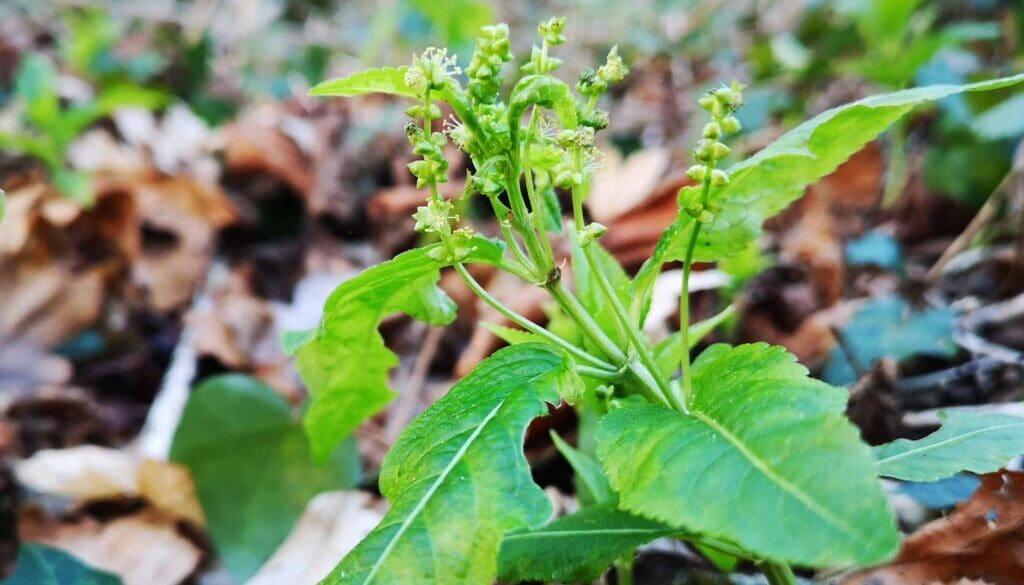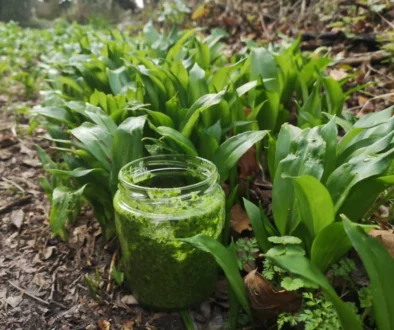Wildlife Blog by Ron Allen – 31 January 2023
First early flowers, some early moths, and the RSPB Big Garden Bird Watch
Some early flowers
At the end of our garden, dog’s mercury is in full flower (image 1). Dog’s mercury is a very common plant of ancient woodlands and it must have spread into our garden from the adjacent ancient hedge. Best not to attempt to eat it because it is extremely poisonous (including to dogs). Interestingly, I read from the Woodland Trust’s website that: ‘Dog’s mercury is unrelated, but similar to Good-king Henry (Chenopodium bonus-henricus). The common name for this species is mercury, which gave dog’s mercury its name (the ‘dog’ meaning bad or not as good in reference to its poisonous properties).’
Looking out in the garden today I spotted our first primrose in flower (image 2). As more flowers open and the weather warms, entomologists will be looking out for the appearance of the first bee-flies which like probing primrose flowers for nectar. We have snowdrops in bud but I understand that many are now in full flower.
Some early moths
Although the weather has generally been too cold and frosty for moths, I did put the trap on for the evening of Wednesday 28 February and was very pleased to have attracted two moths (which is pretty good for these conditions). Of special interest was the Early Moth Theria primaria (image 3) which was NFG. Moth enthusiasts use a variety of terms, NFG means New for Garden and NFY means New for Year. This moth, although apparently common, was new to me and a good addition to my garden moth list which currently totals over 160 species since I started recording for the National Moth Recording Scheme in June 2019.
On the same evening I found the tiny Agonopterix heracliana also known as the Common Flat Body Moth (image 4). Flat body moths are all small and rest with flattened overlapping wings. A few days earlier I had found another species of flat body moth Agonopterix arenella also known as the Brindled Flat Body Moth (image 5) indoors on a wall and which may have come in with the firewood.
RSPB Big Garden Bird Watch
Over the 27-29 of January (Friday to Sunday) we joined thousands of others spending an hour looking out of our windows across our gardens and counting birds, a survey now into its 44th year.
On Friday morning, the first bird of the list was Pheasant with three on the bird table. Chaffinch, bluetit and great tit followed and then in turn starling, robin, collared dove, dunnock, long-tailed tit, great spotted woodpecker (image 6), wood pigeon, blackbird, green finch and finally house sparrow. A total 28 birds of 14 species. Annoyingly, in the evening we spotted wren and goldfinch but it was too late to add them to the 1-hr list.
On Saturday morning, we only had time for a half hour watch and recorded 18 birds of 11 species and this time also had jackdaw and wren.
On Sunday morning we had a very similar list, recording 33 birds of 15 species and added coal tit.
Interestingly, we did not record goldfinches which had been common through last year (other than spotting two outside of the recording periods), but we did record greenfinches which had been rare in the garden. We failed to spot tree-creeper which we had seen a few days earlier and we have not seen a nuthatch at all this year and only rarely last year.


















